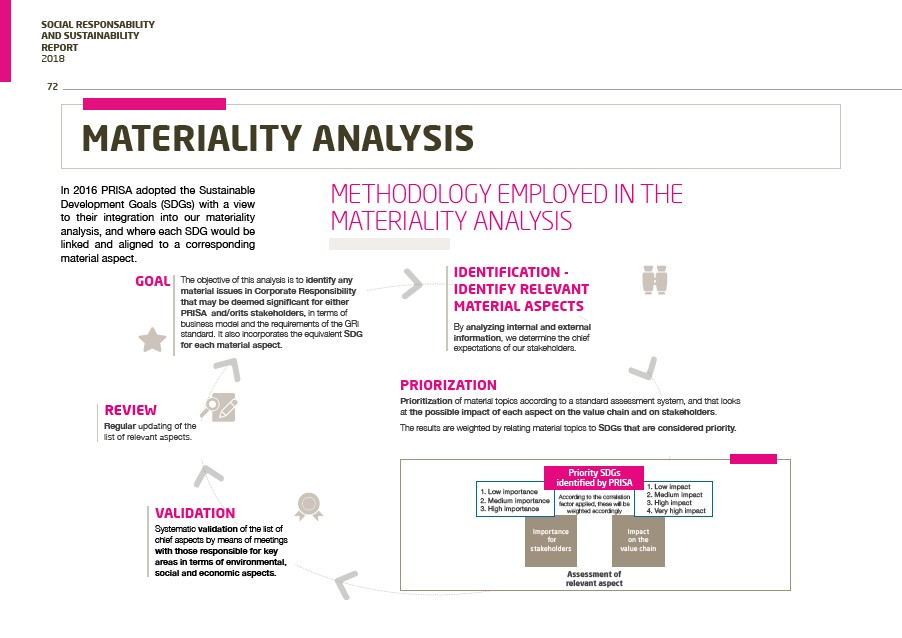
72 SOCIAL RESPONSABILITY
AND SUSTAINABILITY
REPORT
2018
MATERIALITY ANALYSIS
In 2016 PRISA adopted the Sustainable
Development Goals (SDGs) with a view
to their integration into our materiality
analysis, and where each SDG would be
linked and aligned to a corresponding
material aspect.
GOAL
METHODOLOGY EMPLOYED IN THE
MATERIALITY ANALYSIS
By analyzing internal and external
information, we determine the chief
expectations of our stakeholders.
PRIORIZATION
Prioritization of material topics according to a standard assessment system, and that looks
at the possible impact of each aspect on the value chain and on stakeholders.
REVIEW
The objective of this analysis is to identify any
material issues in Corporate Responsibility
that may be deemed significant for either
PRISA and/orits stakeholders, in terms of
business model and the requirements of the GRI
standard. It also incorporates the equivalent SDG
for each material aspect.
Regular updating of the The results are weighted by relating material topics to SDGs that are considered priority.
list of relevant aspects.
Priority SDGs
identified by PRISA
According to the correlation
factor applied, these will be
weighted accordingly
Importance
for
stakeholders
Impact
on the
value chain
1. Low importance
2. Medium importance
3. High importance
1. Low impact
2. Medium impact
3. High impact
4. Very high impact
Assessment of
relevant aspect
VALIDATION
Systematic validation of the list of
chief aspects by means of meetings
with those responsible for key
areas in terms of environmental,
social and economic aspects.
IDENTIFICATION -
IDENTIFY RELEVANT
MATERIAL ASPECTS